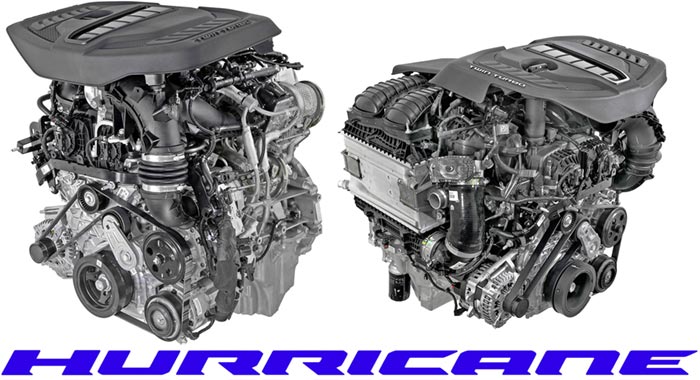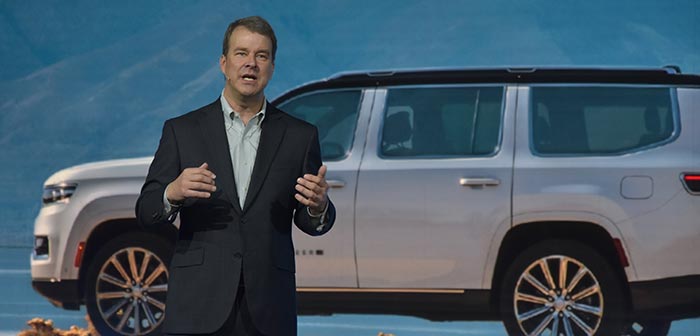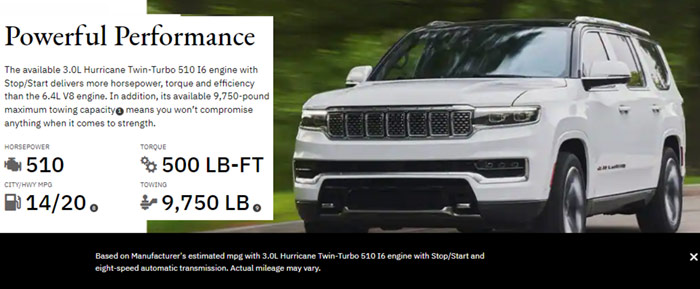The Hurricane I6 comes in two forms, standard output (beating the 5.7 Hemi) and high output (beating the 6.4 Hemi’s 485 horsepower by 25 hp, and its 485 pound-feet of torque by 15). Acceleration is said to be thrilling, with strong torque throughout the engine’s rev range. But what about gas mileage?
According to EPA filings, the 2023 Grand Wagoneer will achieve 13 city, 18 highway with the 6.4 liter gasoline engine. The Hurricane Six not only increases acceleration; it returns gas mileage of 14 city, 20 highway. (Going to the Grand Wagoneer L drops that by 1 mpg on the highway for the Hurricane; there is no 6.4 listing for the “L.”)

Some may say that the Hurricane represents a lot of work and cost to gain 1 mpg city, 2 mpg highway, and they would be correct—but that gain is more substantial than it may seem. The EPA estimates it drops the owner’s fuel cost from $4,650 per year to $4,100. That’s $550 per year—or, if you prefer, 2.3 barrels of oil per year. They’re using a 15,000 miles per year, 55% in stop and go traffic, $4.65/gallon (premium) scenario to get those numbers. We plugged in 12,000 miles per year, with 60% of that in stop-and-go traffic and $4.75 per gallon for premium fuel, and the savings ran to $500 per year.

For those concerned about supporting countries like Russia, Saudi Arabia, Iraq, Venezuela, and Iran, saving over 110 gallons of fuel per year, per vehicle, can justify the new engine—even if we ignore the Hurricane’s greater acceleration. What’s more, every mile per gallon of increase is more money that doesn’t have to be spent buying fuel-economy credits—which subsidize future Chrysler/Dodge competitor Tesla’s growth.
In gas mileage, there is a definite advantage as well, though it’s not as pronounced as some may hope. The EPA figures for Hurricane-equipped Wagoneers, rounded off to integers, are reportedly 17/23 for rear wheel drive, 16/22 for four wheel drive for the Hurricane.

Looking at the standard Wagoneer, the Hemi, which again has lower power ratings, has fuel economy of 16/22 with rear wheel drive. The Hurricane adds one mile per gallon city and one mile per gallon highway with the same setup. That ends up at around 100 gallons per year. Both take midgrade fuel, which at $4 per gallon is around $400 per year.
Multiply a savings of either 110 gallons (premium fuel) per year or 100 gallons (midgrade fuel) per year by a 15 year vehicle lifespan and 60,000 vehicles per year, and you have a hefty amount of gasoline—around 100 million gallons for a year‘s production of Grand Wagoneers, for example. Was the Hurricane program worth it? One has to say, given these savings plus better acceleration, that it was quite the success.
Discover more from Stellpower - that Mopar news site
Subscribe to get the latest posts sent to your email.